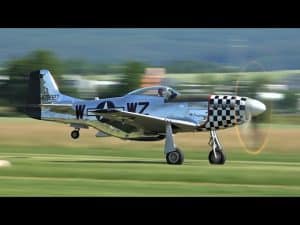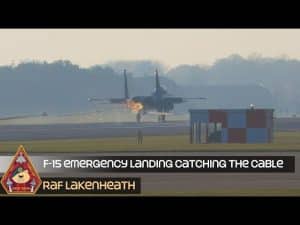German Aces: 13 Crazy Facts About The Best
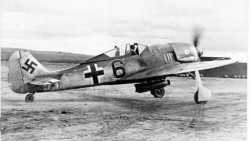
acepilots.com
During World War II, they dominated the skies during aerial combat. Even though in some theaters they were outnumbered 20 to 1, they still managed to defeat enemy aircraft. So what about these German Aces? Are they really way better than their Allied counterparts?
Let’s run through some incredible facts:
1. The greatest scoring fighter pilot, Major Erich Hartmann, scored a total of 352 aerial kills.
He is the greatest scoring fighter pilot in the World War II. Out of 1, 404 combat sorties and 825 aerial combat engagement, he has achieved 352 victories. He may have crashed 14 times but it was either of two reasons: running out of fuel OR damage to his aircraft due to flying debris from those birds he had shot down. And another thing about this legend, he has never lost a wingman. Now there’s a feat!
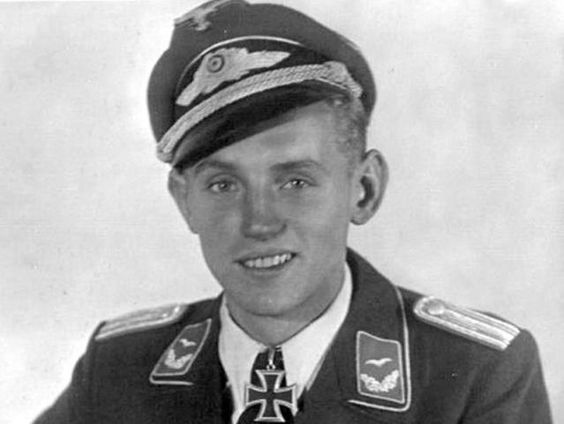
2. Germans claim 70,000 aerial victories throughout World War II.
This number is for both day and night fighters. 45,000 of those kills involved Russian war birds while the 25,000 were flown by either Americans or British. They racked up notably high scores over Germany, Great Britain, Soviet Union, North Africa and France to name a few.

3. There are 2,500 German fighter ace pilots.
To achieve the ace status, you need to shoot down at least five enemy planes during combat. Although these are pretty impressive figures, German loses are just as high. 12,000 German day fighter pilots were either killed or reported missing. while night fighter pilots had about 2,800 casualties.
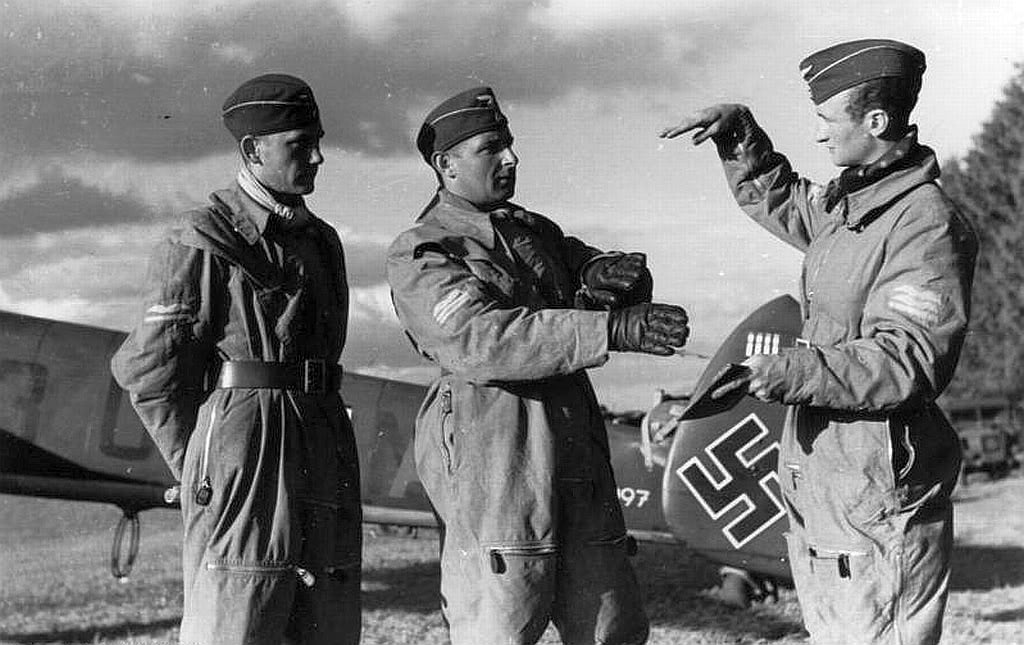
4. 453 day pilots and 85 night fighter pilots were awarded with the Knight’s Cross of the Iron Cross.
This is the highest award given by the Nazi Germany to military men as a recognition of their exemplary bravery or leadership exhibited in the battlefield. This military decoration, although the highest any German soldier could attain, is still just the second to the Grand Cross of the Iron Cross which was awarded only once — to Hermann Göring, Hitler’s second-in-command.

5. Luftwaffe pilot ‘kills’ need to be confirmed by another pilot.
In most countries, the ‘kill’ score was determined by the combat reports. Novice and first-timers need have more solid proofs than just their ‘unsupported’ word. Otherwise, if they came back alone and boasting of huge numbers of aerial victories, that would undoubtedly be viewed with skepticism.

6. German pilots would often do two to three sorties a day.
Even so, the only pilots who were able to score triple-ace in a day (destroyed at least 15 enemy warbirds during the combat) all came from Germany. One of them, Hans-Joachim Marseille a.k.a. ‘Star of Africa’, shot down 17 Allied fighters in three sorties in North Africa in just one day. Hence, the nickname.

7. The Luftwaffe lived by the policy, “fly until you die.”
For US troops, they needed to complete 25 missions for one tour — their ticket for going home. But for Germans, they don’t ‘rotate’ home. They don’t even have any limit to the number of combat hours. In a way, this made it easier for the aces to rack up more victories. One ace pilot, Erich Rudorffer, has flown a thousand combat missions and was shot down 16 times by enemy aircraft and flak but he’s also had 222 aerial victories.

8. A bullet-ridden tail wing from the highest scoring night fighter ace in World War 2 was put up in auction for $28,600.
Legendary German ace Heinz-Wolfgang Schnaufer has a total of 121 aerial victories which earned him the Knight’s Cross of the Iron Cross with Oak Leaves, Swords and Diamonds and even received the nickname “The Spook of St. Trond”. His 121 enemy kills were stencilled into the Messerschmitt bell fin. It was shot down but the wing ended up being used as a roof patch.

9. A German fighter ace allegedly shot down “Little Prince” author’s plane.
It used to be just a speculation that Antoine de Saint-Exupéry’s Messerschmitt Me-109 was shot down killed during a wartime aerial reconnaissance mission back in 1944. It was only after a French journalist investigated the case in 2008 when it was found out that Horst Rippert, a Luftwaffe ace with 28 victories, was the one responsible for shooting down the famous author’s war bird. However, since no solid evidence supports the claim, this remains to be a hypothesis.
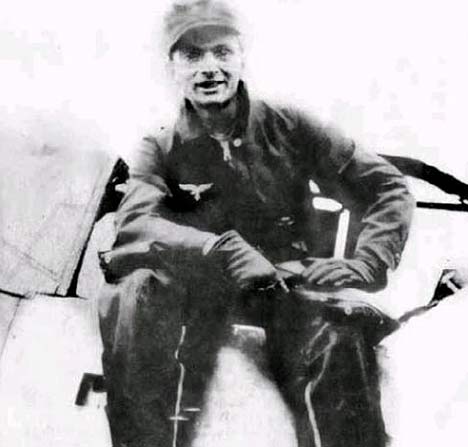
10. The first step in transitioning from a civilian to a Luftwaffe pilot was by joining a Fliegerersatzabteilung.
Its American equivalent was a boot camp and any civilian interested in becoming a pilot needs to spend six months at this recruit training depot. The focus was more on physical training like drills and the like. Lectures were basically about the principles of map reading. The next step would be a two-month Fluganwärterkompanie which will tackle general aeronautic subjects.

11. Fighter or dive bomber pilots need to undergo 13 months of training and 150-200 flying hours.
On the other hand, a reconnaissance pilot or bomber will receive 20 months of training with 220 to 270 flying hours. But these are all prior to 1942. During the war, time was of the essence and the training was no longer as efficient and smooth-running because of the pressure from Allied forces strength.

12. In May of 1944, the Luftwaffe lost 50% of its frontline fighters in aerial warfare.
Well into the war, Germany was losing much of their pilots and losing them fast. In mid-1944, new and inexperienced pilots were reporting for duty and given that they did not receive adequate training, their life expectancy was merely a few sorties.

13. Luftwaffe pilots flew an average of 1,000 to 2,000 missions.
Owing mostly to the ‘fly till you die’ policy, German pilots (especially aces) easily racked up victories because they have more engagement in aerial combat than their Allied counterparts who would only go for 250 to 400 missions. But then again, Allied fighters especially the Americans, were allowed to go home after 25 missions. That explains much.
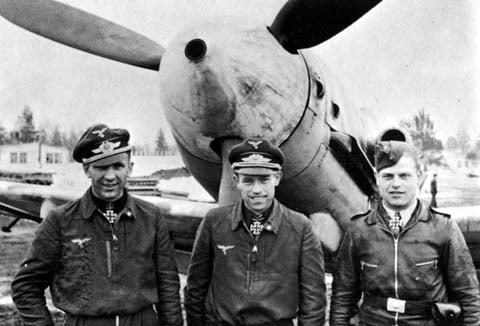
The best of the best in aerial warfare, these German aces have made history. There may have been various reasons why they shot down more enemy aircraft than the Allied forces but still, you can’t discount the fact that these pilots are simply badass.












